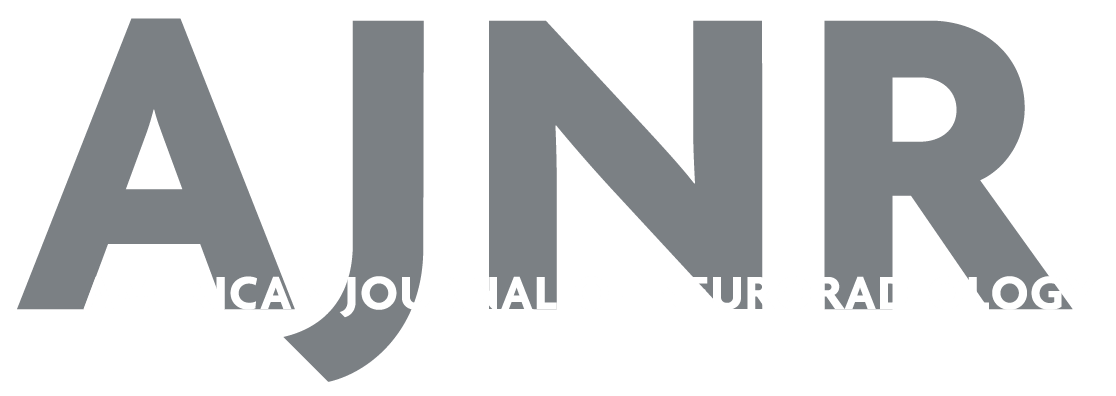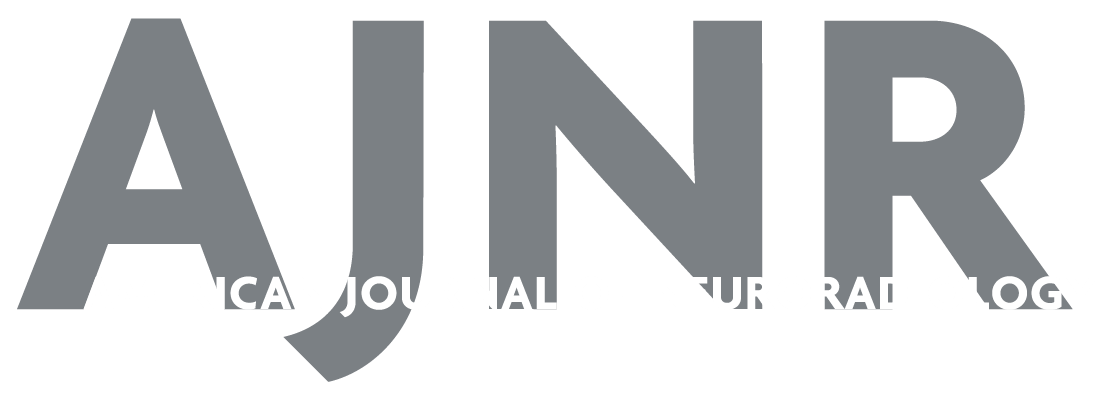There has been a dramatic change in the number of graduating residents who elect to pursue neuroradiology as a specialty, as evidenced by the new fellowship matching program statistics. The National Neuroradiology Fellowship Matching Program indicates 156 fellowship slots available for 2002. Only 71 (45%) of the 156 positions have been filled through this new program, and only 22% of the fellowship programs have been filled. The decreased number of radiologists going into neuroradiology could have a significant impact on the future of our specialty.
During 1996 and 1997, there was a significant discussion within the neuroradiology community about decreasing the number of neuroradiology fellowship programs. This controversy was stimulated by the paucity of neuroradiology jobs in the academic and private practice communities. At that time, there was a 10% decrease in the number of radiology residency slots across the country. Many in the neuroradiology community were concerned about the “false advertising” of the benefit of neuroradiology training, considering that at the end of the rainbow, there were few jobs for the trainees. During that time period, there were more graduating radiology residents than there were jobs, and, simultaneously, private practice groups were changing their approach to hiring. This hiring change was stimulated by the effect of increased managed care and declining reimbursement. Many groups were beginning to hire nonpartnership track radiologists, particularly to fill the nighttime teleradiology component (nighthawk) of the practice.
What a difference 4 to 5 years has made. There has been a dramatic decrease in managed care and competition, allowing increased availability of high technology and specialists to patients. This increased access and booming economies have opened the floodgates, and there are now many more jobs than there are graduating radiologists. This impact has followed the typical supply-side economic model, with which starting salaries have increased dramatically, because there are fewer radiologists than jobs. Unfortunately, this has attracted many graduating radiologists into the work force rather than into fellowship programs. This has been most apparent in the field of pediatric radiology.
Contrast this to the mid-1990s when there were more radiologists than jobs and the junior staff and fellowship positions were full in the academic centers. During that period, tremendous strides were made in neuroscience in functional imaging, spectroscopy, diffusion and perfusion imaging, and interventional neuroradiology.
The future of neuroradiology is in innovation and advancement in neuroscience. If our neuroradiology fellowship programs cannot attract the best and the brightest, where will we be in the next 5 years? The current flip in the job market, now with more jobs than graduating residents and fellows, could have a tremendous long-term negative impact on our specialty. It appears that many residents have opted for the job market rather than further training. For the resident, private practice, and the community, this seems to be a win-win situation in the short term. But who wins in the long run? Not the neuroscience community, not the radiology practice, and not the academic center. If there are not an adequate number of neuroradiology fellows graduating from programs, who will push the scientific envelope and who will win the Cornelius G. Dyke Memorial Award in the future? The ultimate question is who will advance neuroscience in the academic and private communities? The probable answer is the neurologist or neurosurgeon who is better trained in neuroanatomy, neurophysiology, and neurologic diseases than is the general radiologist. Without continued advances by neuroradiology in the neuroscience community, our position as innovator and leader will evaporate.
How can and should we respond to this manpower issue? First, private practice groups should evaluate the benefits that subspecialty training brings to their practice and community. Subspecialty radiology training allows groups to stay in the forefront of other specialties in each selected subspecialty area. Currently, many private practice groups do not think that additional training is needed to perform “neuroradiology.” Organized medicine and the insurance industry have not recognized the benefit of subspecialty neuroradiology training. Today's graduating residents might have larger education debts than past trainees and might think that the myth of the “gravy train in radiology” could be ending. Despite these realities and perceptions, radiology practices need to encourage the bright and talented residents who are interviewing for positions in their practices to get additional subspecialty training before recruitment. The downside to this futuristic view is a short-term increase in the workload within the radiology practices. The long-term benefit should be obvious.
Second, the academic community, which continues under significant financial constraints, is having difficulty balancing the research, training, and increased clinical workload that are necessary to keep the department viable. The academic neuroradiologist in many centers is looking more like a private practice neuroradiologist, with less time for research and more time as a practicing specialist. The closer the academic job approaches the private practice job, the less likely the junior staff neuroradiologists will elect to stay in academic medicine for fewer dollars.
There are no clever or easy solutions to these problems. Both the academic and private practice communities must commit to the need for subspecialty training of graduating residents for our specialty to survive and thrive. To accomplish this goal, there should be a new relationship between private practice and academic centers. In formulating this new relationship, neither academics nor private practice will get their own way.
To help accomplish the goals of stabilizing and improving our neuroradiology training programs and recruiting graduating residents into these programs requires innovative and creative solutions. One potential solution would be for private practice groups to help fund neuroradiology training programs. This cost sharing of the fellowship program could increase the salary of the neuroradiology fellow and offer the private practice community a voice in the fellowship training. Second, there could be increased integration or use of the private practice radiology group for fellowship training to broaden the fellow's experience. A third solution would be to create incentives to keep junior staff at academic institutions longer. Fourth, there could be shared cost for clinical research programs between academics and private practice. Not all academic centers or private practice groups will see the benefit or need for this collaboration because there are different regional needs and problems. At best, this could start in a few places around the country as a Petri dish experiment. If this integration is successful, it might be modified and expanded. If we are not successful, there will be continued competition between the private practice groups and the academic centers for the best and brightest young neuroradiologists. Unfortunately, with this type of competition, there will be few winners.
Finally, the academic and private communities must challenge and help the American Board of Radiology and the American College of Radiology to find creative solutions for the subspecialty manpower crisis through creative training program modifications. The goal should be to shorten the overall training time without decreasing competency.
Solving the manpower issue will be a daunting task. It is easy for private practice and academics to point fingers at each other regarding why we have these problems. It is much harder to put the finger down and open the mind to find creative solutions. Ultimately, common ground can and must be found in the neuroradiology community.
- Copyright © American Society of Neuroradiology












